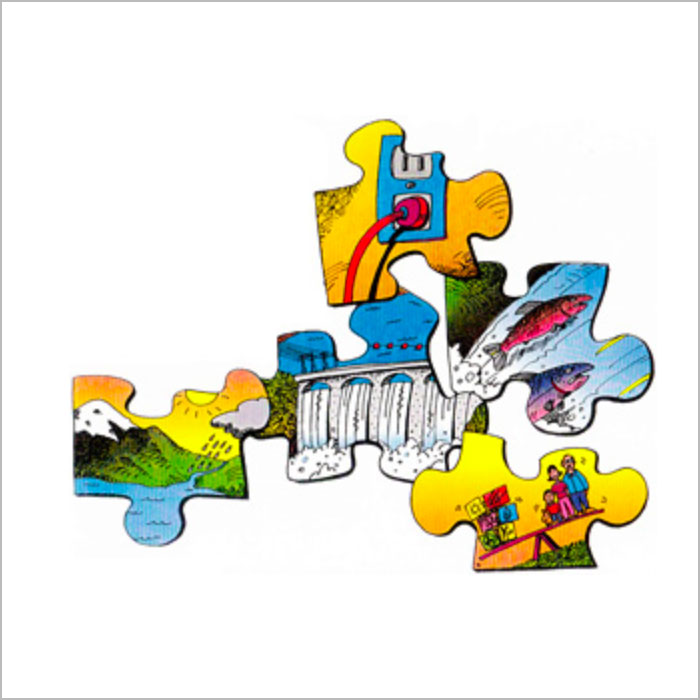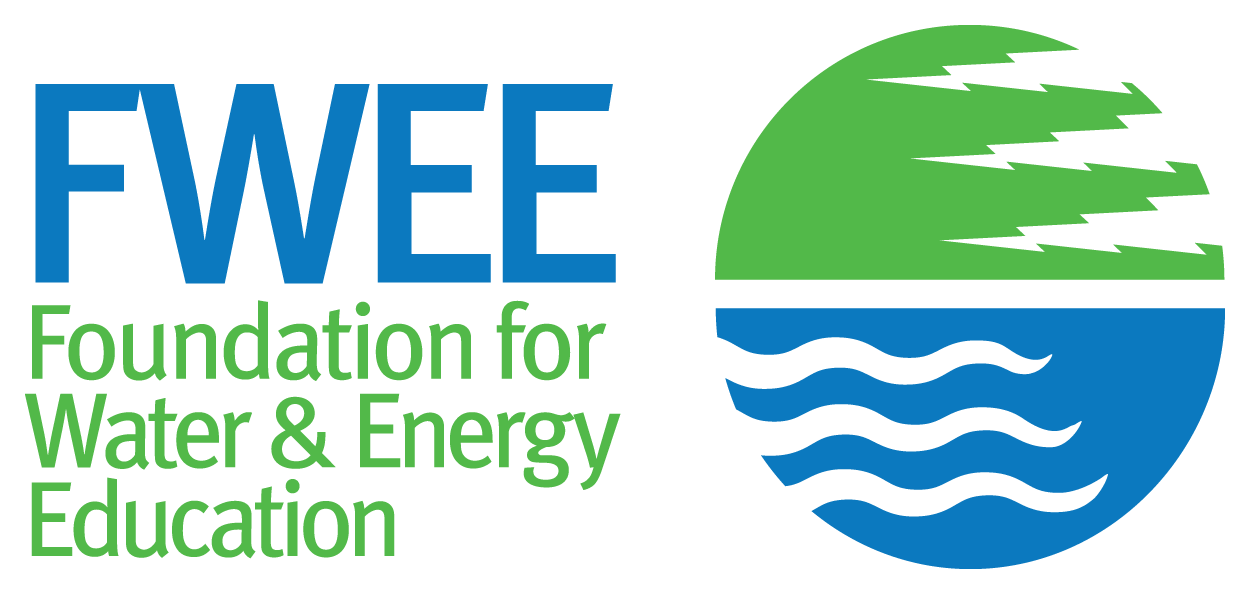The Nature of Water Power
A Hands-On Science Curriculum for Students
The Nature of Water Power is a thematic science unit appropriate for grades six through eight.
The science activities in this curriculum are written to the latest science standards. Select activities will engage students in the science process, and encourage scientific thinking, hypothesizing, experimental design, collection, organization and interpretation of the data. As students experience the activities, they are provided the opportunity to move to higher levels of investigation. Thus students are better prepared to apply the processes of science to analyze, understand, and solve problems dealing with the standards.
Materials List | More About this Curriculum
Curriculum Units

Unit 1 – What is the Water Cycle?
- Activity A
Can you identify the properties and states of water? - Activity B
Can you make dirty water clean?
Unit 2 – How is Flowing Water an Energy Source?
- Activity A Will water falling twice as high create a splash twice as large?
- Activity B Can water pressure influence water flow?
- Activity C Will changing the slope of falling water affect how fast it flows?
Unit 3 – How Can Work Be Done With Water Power?
- Activity A Can the force of falling water be used to lift a weight?
- Activity B Can a water wheel be used to generate electricity?
- Activity C Can a reservoir be used like a rechargeable battery?
Unit 4 – How Can a Dam Affect a River?
- Activity A Can you identify members of the food pyramid?
- Activity B Do the same plants and animals that live a reservoir live in a river?
Unit 5 – How Can Community Values Affect the Energy Resources We Select?
Unit 6 – How Can Communication of Scientific Knowledge Influence Others?
Materials List
materials_listMore About this Curriculum
The activities in this teacher guide offer your students an opportunity to explore the nature of water power. In the Northwest, where about 65% of the region’s electric generating capacity comes from hydropower, exploring the scientific and social links between the hydrologic cycle, rivers, and electricity is important to understanding a major part of our daily environment.
This curriculum uses a hands-on, minds-on approach for students to explore these links. Broken into six units, students begin by inquiring into the nature of water and the hydrologic cycle. They then explore the physics of how moving water can be used to generate electricity, the environmental impacts of harnessing this energy source, and comparing the costs and benefits of hydropower to other energy sources.
As a thematic and inquiry based curriculum, certain process skills are woven throughout. These include making hypothesis, observing, drawing, creating and testing models, experimenting, recording and graphing data, making inferences, and forming conclusions. Vocabulary that is important to both the subject matter being explored and the process skills being engaged is also highlighted at the beginning of each activity.
The hands-on activities used place a premium on students working in teams. At the same time, the curriculum provides a clear means for teachers to engage students in journaling and utilizing alternative assessment.
The set-up times needed to conduct activities are generally fairly short. The activities, however, often require the teacher or students to bring materials such as plastic soda bottles or milk cartons to school. At the beginning of each activity, both the preparation time and materials needed are clearly indicated. Within the kit are parts that are needed for some experiments and not readily accessible. These parts can be shared by teachers and used again from year to year.
Lastly, the curriculum works best when the units are done in sequence because the knowledge gained from one becomes a building block for the next. Some teachers may wish to conduct these activities over a three to four week period. Others may wish to weave it in with related curriculum and instructional activities, e.g.— water quality, physics, or meteorology, over a period of months. Also, the time period indicated for each activity is a guide. Some teachers spend much more time on one or more activities because they want their students to receive the benefits of becoming deeply engaged in testing different designs and model building.
For additional information about the Nature of Water Power or other materials available from FWEE, call (509) 535-7084 or email us.
